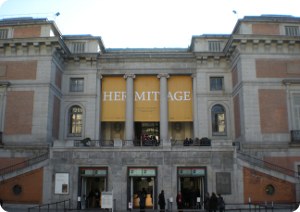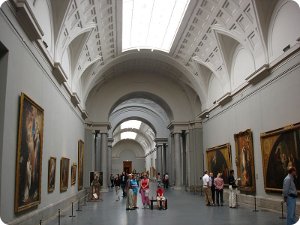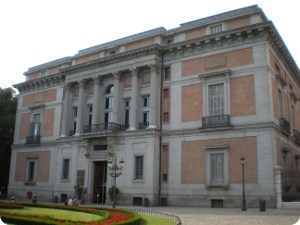Prado Museum
Prado Museum
 The Prado Museum is renowned as being the largest art gallery in the world.
It is now one of Spain's major tourist attractions.
It also exhibits sculptures, drawings, coins and other works of arts, but it is undoubtedly its large collection of
paintings which has given it fame worldwide. It houses more than 8,600 paintings, of which they exhibit less than
2,000 because of lack of space available. Many museums throughout the world have less artistic riches in their halls
than the Prado Museum has in storage.
The Prado Museum is renowned as being the largest art gallery in the world.
It is now one of Spain's major tourist attractions.
It also exhibits sculptures, drawings, coins and other works of arts, but it is undoubtedly its large collection of
paintings which has given it fame worldwide. It houses more than 8,600 paintings, of which they exhibit less than
2,000 because of lack of space available. Many museums throughout the world have less artistic riches in their halls
than the Prado Museum has in storage.
The present day art gallery comes from the royal collections of the old Trinidad Museum, as well as acquisitions,
donations and bequests.
Its history began during the reign of Charles III, when he tried to create a single art collection under one roof.
But it was not until the reign of Fernando VII when the Royal Museum of Painting and Sculpture was created, on
19th November 1819. The kings death caused inheritance problems and endangered the unity of the collection, but
with the disappearance of the monarchy in Spain the museum became national property and became known as the
Prado National Museum.
From then to this date, the works of art have survived several challenges and were transferred several times during
the Spanish Civil War, ending up in the Swiss city of Geneva and being returned to Madrid during the Second World War.
 Nowadays, its treasures are exhibited in two adjacent buildings: the Villanueva Building where the majority of the
works are housed, and the Casón del Buen Retiro.
Nowadays, its treasures are exhibited in two adjacent buildings: the Villanueva Building where the majority of the
works are housed, and the Casón del Buen Retiro.
The multiple origins of the paintings of the Prado Museum allow us to classify its works according to the
nationality of the original school.
Italian: has among others, works by Andrea Mantenga, Sandro Botticelli, Rafael, Andrea del Sarto, Correggio,
Lorenzo Lotte, Tintoretto, Verones, Tiziano, etc.
Flemish: with works by Rogier Van Der Veyden, Jochim Patinir, Quentin Metsys, Bernard Van Orley, Hieronymus
Bosch, Pieter Brueghel, Jordaens, etc.
German: French and Dutch schools with works by Lucas Cranach, Albert Dürer, Nicolas Poussin, Claudio de
Lorena and Rembrandt.
Spanish: Velázquez, Goya, Murillo, Bartolomé Bermejo, Pedro Berruguete, Luis de Morales, El Greco, Juan B.
Maino, José de Ribera, Alonso Cano, Caudio Coello, Zurbarán, Luis Meléndez, etc.
 Directions:
Directions:
Prado National Museum
Ruiz de Alarcón Street, 23
28014 Madrid
Phone: +34 91 330 28 00
atencion.visitante@museodelprado.es
https://www.museodelprado.es/en/
Opening hours:
Monday to Saturday: 10:00 h to 20:00 h.
Sundays and holidays: 10:00 h to 19:00 h.
Reduced opening hours (January 6, December 24 and 31): 10:00 h to 14:00 h.
Closed:
January 1, May 1, and December 25.
* The galleries are cleared 10 minutes before closing.
* More info about the Opening hours and Ticket Prices: https://www.museodelprado.es/en/visit-the-museum/
* Line 1 - Atocha station.



